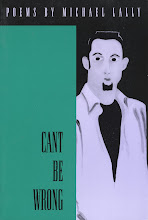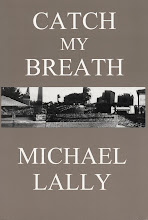I’m not sure why, maybe it’s that thing about how when men get older they get more like women, and vice versa. Or so it was said, and observed, when I was a boy, and sometimes still. Not that we all aren’t equal and should have the same opportunities etc.
Whatever the reason, the persons I’ve identified most closely with, in terms of how I lived (and live) my life, the values I adhere to and the perspective I have on this part of it (which is all we ever have) most recently have been women. And women some people would not necessarily think of as happy, or satisfied, or as successful as the men in their fields, including their husbands and lovers.
Nonetheless, I’d rather have the chance to sit down and talk to any of these ladies, if they were still alive, than any man I can think of who they happened to be seen by the world, or the critics, or those who keep score of levels of fame and power (and impact), as competing with. Like Martha Gellhorn, who I mentioned in earlier posts.
She’s the latest of, as almost always with me a list of three, in this case women creative artists—a lousy label but it would be impossible to summarize their achievements as I see them by simply the art form they were most noted for, or not—whose lives and work I identify more with than anyone else I can think of today (outside of some friends and contemporaries).
I stumbled on a Second World War novel of hers, THE WINE OF ASTONISHMENT, a few years ago, near the top of a trash pile on the curb in front of the house of an old woman who passed away on a street I was living on then. I spied the 1940s style dust jacket from the opposite sidewalk even with my bad eyes, and honed in on it, noticing the author’s name and remembering it as the same as one of Hemingway’s wives. I took it home and added it to the usual pile of ten or fifteen books beside my bed and began reading it that night. It impressed me enough to want to check out more of her work.
First of all it seemed honest in a way the usual WWII novels never did to me, like Mailer’s THE NAKED AND THE DEAD, or earlier war novels, like Hemingway’s own A FAREWELL TO ARMS or FOR WHOM THE BELL TOLLS. I had read long ago that Gellhorn was a “journalist” but hadn’t taken it that seriously. Now I did.
Unfortunately, almost all of her books are out of print. But fortunately, The Gotham Book Mart had a paperback collection of her war reportage called THE FACE OF WAR and I began with that. If it was the only book of hers I ever read, I’d be in love with her. But then I read a collection of her travel reporting, which included a lot of war writing as well since she was usually traveling to cover a war.
It was called TRAVELS WITH MYSELF AND ANOTHER, the other being mostly Hemingway, who she hated being constantly associated with, especially as one of his wives. I don’t blame her. She was much more interesting than that, than him actually.
She left her home in St. Louis when she was barely out of her teens to trek through Europe on her own, in shorts and sneakers, and find her way eventually into the conflagration that was the Spanish Civil War. (Interestingly, not long after I got into her, a biography was published—GELLHORN, A TWENTIETH CENTURY LIFE—despite the fact almost all of her books are long out of print.)
Right from the start, her accounts of what she saw and experienced were different than what most reporters, all men, were writing. Her take was on the devastation to “civilians”—the “collateral damage” that has become the most modern outcome of wars. Which makes her the most clearheaded and honest of reporters, or one of them. Men, like Hemingway, were still treating wars as if they were fought by honorable men, at least on one side, brave and courageous, which may have been true, but they were missing that the ones who suffered the most, not indirectly as in wars throughout history, but directly—as in the ones who died and were wounded the most—were “noncombatants”.
She got it. And she never gave up. She sympathized with the Republican side of that war, against the Fascists, and now that her SELECTED LETTERS are out, it’s clear she was totally prescient about how that war was a rehearsal for WWII, etc., all we now know she predicted as a young woman barely out of her teens from a relatively privileged if progressive background (her mother was an early model of an independent woman, a suffragette, etc.).
She had several lovers and husbands, one adopted son, lived all over the world in various houses and apartments, and covered every war she could, well into her eighties! She was probably one of the only, if not the only, reporters who covered and actually experienced the Spanish Civil War of the 1930s as well as the Viet Nam War and even Reagan’s Contra/Sandinista war—talk about more civilians dying than combatants!
She had her prejudices and her preferences, but she was fiercely independent, and though in many ways made cynical by the failure of the Republican cause in Spain, and of the Western democracies to come to the defense of it, she felt obligated, with a true sense of duty, to bear witness to the devastation all war brings, especially in wars ever since the Spanish Civil War where more “civilians” now die than “soldiers”.
It’s not just her honesty that I admire so much and identify with—not that I think I don’t struggle with the “truth” like most of us do—it’s her commitment to living her life the way she felt was best for her, or the only way she could, standing up for her beliefs and convictions by living them, and doing this as a young woman and later a very old one, in times when that was difficult enough for a man, let alone a woman. Her fierce opinions and championing of causes in the world of politics and unfolding history, were equaled by her fierce commitment to her own personal truths and the ways she saw fit to manifest them in her life.
What can I say, I fell in love with her, through her writing. I doubt I could have lived with her, or she could with anybody for very long herself—despite the years of trying—but that doesn’t diminish the ways in which I feel a bond of like-minded stubborn adherence to bearing witness to it all as honestly as one can, while at the same time following your heart and never, or rarely, settling for the safe utterance when only honesty will do, or the safe “life choice” when only the spectacularly true-to-your-own-heart’s-desire will do.
Subscribe to:
Post Comments (Atom)
















2 comments:
Thanks for this interesting post. I'm definitely going to try to find and read some of Gellhorn's writings. You have me intrigued. Meanwhile, I have just two words for you: Christiana Amanpour.
Try her SELECTED LETTERS or THE FACE OF WAR if you can find the latter. And you're right with the Amanpour connection, only Gellhorn was doing it as a kid, and still at it in her eighties, and when no other women were, and under much tougher circumstances, like trekking miles into back county behind lines, or on mules through Chinese mountains and mud and rain and cold and bombs and etc. Pretty incredible. But I'd love to know either of them.
Post a Comment